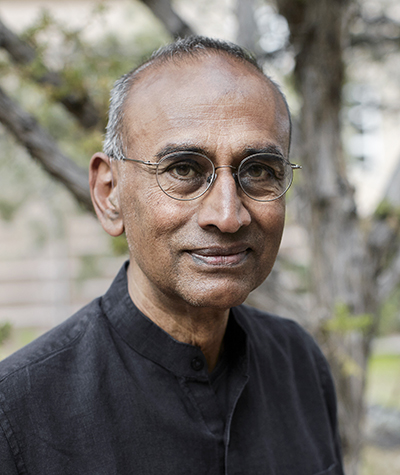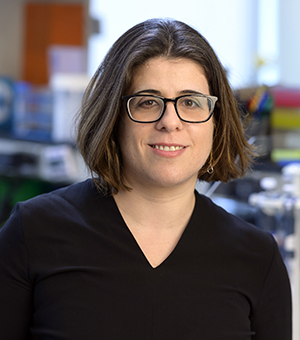
Venki Ramakrishnan, MRC Laboratory of Molecular Biology, Cambridge, England
Group Leader
“Why We Die”
Friday, September 27, 2024, 3:00 p.m., 208 Light Hall
A reception will immediately follow the lecture in the Langford Auditorium atrium.
Abstract:
Ever since we humans learned of our mortality, that knowledge has driven much of human culture. However, for most of our existence as a species, there was little we could do about aging and death. In the last few decades, this has changed. We are beginning to understand the biological basis of aging and how it leads to death. At the same time, longer life expectancies and reductions in fertility rates mean that societies face an increasingly aging population, with an urgent need to improve health in old age. The fear of aging and death is also driving a quest for radical life extension among some gerontologists. My book, on which this event is based, is an attempt to take a hard look at progress and prospects in the field of aging and also point out the social issues involved.
About Dr. Ramakrishnan:
Venki Ramakrishnan received his bachelor’s degree in physics from Baroda University in India in 1971 and his Ph.D. in physics from Ohio University in 1976. He then studied biology for two years at the University of California, San Diego before beginning his postdoctoral work with Peter Moore at Yale University. After a long career in the USA at Brookhaven National Laboratory and the University of Utah, he moved to England in 1999, where he has been a group leader at the MRC Laboratory of Molecular Biology in Cambridge. He received the Nobel Prize for Chemistry in 2009 and was the president of the Royal Society from 2015-20.
In 2000, Ramakrishnan’s laboratory determined the atomic structure of the 30S ribosomal subunit and its complexes with ligands and antibiotics. This work led to insights into how the ribosome “reads” the genetic code, as well as antibiotic function. Ramakrishnan’s lab subsequently determined high-resolution structures of functional complexes of the entire ribosome at various stages along the translational pathway, which led to insights into its role in protein synthesis during decoding, peptidyl transfer, translocation and termination. For the last decade, his laboratory has been applying cryoelectron microscopy to study eukaryotic and mitochondrial translation, especially initiation of translation and translational regulation.
Ramakrishnan is the author of two popular books, Gene Machine:The Race to Decipher the Secrets of the Ribosome (2018), a very frank popular memoir about the race for the structure of the ribosome, and more recently, Why We Die: The New Science of Aging and the Quest for Immortality (2024).
Coming In October!

Agnel Sfeir, Memorial Sloan Kettering Cancer Center
PaineWebber Chair in Cancer Genetics
“Two Genomes, One Balance: Mitochondrial and Nuclear DNA Stability”
Wednesday, October 30, 2024, 2:00 p.m. CT, 202 Light Hall
A reception precedes the lecture at 1:00 p.m. in 618 Light Hall.
Co-sponsored by the Department of Biochemistry
Abstract:
Eukaryotes cells contain two distinct genomes – nuclear and mitochondrial – which have distinct evolutionary origins and are housed in separate environments. The interplay and coevolution of these genomes are crucial for maintaining cellular homeostasis. Perturbations to either genome can disrupt their crosstalk and affect cellular responses. I am fascinated by how cells manage these challenges to maintain the delicate balance of preserving genome stability while allowing genetic innovation.
My research program revolves around two fundamental questions related to genome stability. Firstly, we investigate the evolutionary benefits of the microhomology-mediated end-joining (MMEJ) repair pathway that fixes DNA breaks in the nuclear genome. Despite being widely conserved, MMEJ’s physiological role remains elusive. We aim to test the hypothesis that MMEJ balances genome integrity and evolution by promoting extrachromosomal DNA circularization. The circularization of invading DNA through MMEJ is a protective mechanism that shields the host genome. These circularized elements can resist nuclease degradation and persist in the nucleoplasm, providing a substrate for potential integration and stimulation of genome diversity.
In another line of inquiry, we will explore how the nucleus manages perturbations to the mitochondrial genome. Aberrations in mitochondrial DNA profoundly impact cellular function. Yet, standard methods of assessing the extra-nuclear genome and efforts to study it in isolation fail to address fundamental questions about its instability. To tackle this, we will develop innovative genetic and molecular tools to investigate the outcome of three toxic mtDNA aberrations and determine how they alter mito-nuclear crosstalk.
About Dr. Sfeir:
Molecular biologist Agnel Sfeir studies how DNA is broken and repaired, and how these processes are related to aging, cancer, and other phenomena. Her scientific contributions are notable for their breadth and depth, unified by the theme of genome stability. Trained as a telomere biologist, she has made seminal contributions to our understanding of telomere protection and maintenance. Since establishing her lab in 2012, she has been fascinated by the remarkable ability of cells to preserve genomic stability and curious about how these pathways fail in cancer cells. Her laboratory has significantly advanced research in two key areas: DNA double-strand break (DSB) repair of nuclear DNA and mitochondrial DNA (mtDNA) stability.
A recent interest of hers is in the biology of the DNA inside of mitochondria — the “power plants” of the cell. She calls this DNA “the forgotten yet fascinating genome.” Dr. Sfeir joined Sloan Kettering Institute’s Molecular Biology Program in March 2021, having previously been a faculty member at New York University’s Skirball Institute of Biomolecular Medicine.